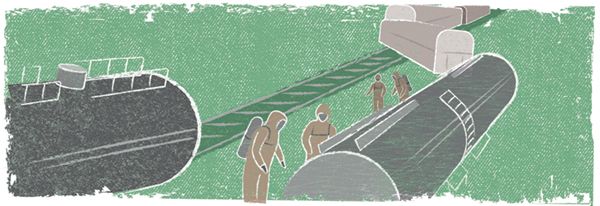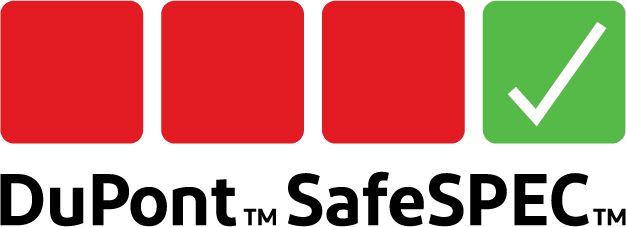Training, Tips and Tactics for EMS Hazmatters
By Jason D. Rogers
Executive Director, Emergency Management, Emergency Medical Services,
Delaware County, Indiana

I wouldn't exactly call it a “fad” in today’s climate, but more and more EMS providers are training in the hazmat and chemical, biological, radiological, nuclear and explosive (CBRNE) arenas. Let's examine why.
First, you’ve got the ongoing chemical threats of our highway and rail systems to think about. Sprinkle in a few bad drivers, guys trying to beat the train, DOT 406 turnovers and the ever-present risk of train derailment. It might not be everyday work, but it’s still something we need to prepare for.
We’ve also seen a spotlight on terrorism, including active shooters, mass-casualty bombings and multifaceted plots that force us to rewrite the rules from time to time. Examples include the current popularity of pressure cooker bombs like those used in Boston, and more recently, New York and New Jersey. We can also talk about biological threats and transporting those with “flu-like symptoms.” Who can forget the Ebola scare? These are real concerns, but they aren’t always high priorities in times of cutbacks and lean budgets.
So you might be asking: What does EMS have invested in hazmat? The simple answer is the patient. Whether your EMS is fire-based, hospital-based, a private service, or a true third-party service (municipal, non-fire based), the fact remains that people with acute exposure need to be transported to hospitals for definitive care. The old days of “load and go” have gone by the wayside with all the technology and medical advances available to first responders and medical staff.
If you’re not training in hazmat response and the proper use of personal protective equipment (PPE), you’re missing the boat. Educating your local hospital about your EMS capabilities is imperative, too, because they’re the ones receiving the patient. It’s important to practice—or at least review—hazmat and decontamination procedures before you try to implement them in an established hospital command structure.
At my own agency, as we’ve continued our training program and have become more comfortable with EMS-based hazmat response procedures and PPE, it’s opened other opportunities and areas for improvement. For example, we've started to utilize our Tyvek® suits when transporting patients with bedbug infestations. We're not wearing them; we're having the patients don the hooded suits prior to transporting them to the hospital for non-emergency calls.
We are more prepared today because of the training we did yesterday, last month and last year. And the more we train, the more useful our knowledge base becomes.
Chemistry Simplified (Maybe) and PPE
By George C. Walton
CHMM, Reactives Management Corporation

More than 2,000 years ago a Greek philosopher named Democritus developed a theory of “stuff.” He said that any object could be cut into smaller and smaller pieces. An apple, for instance, could be cut into halves, quarters, eighths, sixteenths, thirty seconds, sixty fourths and so on. And what would you end up with? Applesauce? No! According to Democritus, eventually you’d wind up with a piece that couldn’t be further divided. He used the ancient Greek word tome, meaning to cut, which is still part of words like appendectomy, tonsillectomy, etc. In ancient Greek, if something couldn’t be cut it was a-tome. Translate that into modern English, and you get the word atom.
Democritus was partially correct, but it took until the 19th century for us to find that out. Nature, as we now know, is made up of these atoms, the basic units of matter. A substance formed entirely of one kind of atom is called an element. Chemists work with about 100 different elements, which they arrange into functional groups such as alcohols, aromatics, ketones, aldehydes, amines, etc., to create the materials we encounter every day.
This is why we’ve divided our DuPont Permeation Guide into chemical classes (e.g., carboxylic esters), which are further divided into subclasses (e.g., acetates, formates and lactones). When we want to avoid exposure to a particular material, we can look it up by its class and subclass and find the appropriate protective apparel. For example, using the DuPont Permeation Guide, we can look up a class (ethers), a subclass (glycol ethers) and a specific ether glycol ether (Butyl Cellosolve®).
So, when selecting the proper protective equipment, it helps to understand at least the basics of how chemical compounds are organized.
Back to Top
Hazmat Through History: Mercury Poisoning
By Daniel Hammel
Garments Inside Sales Manager, DuPont Protection Solutions

Lewis Carroll’s classic children’s book, “Alice’s Adventures in Wonderland,” gave us one of our earliest lessons on the dangers of hazardous materials. Carroll’s character, the Hatter, behaves bizarrely as Alice interacts with him at his equally bizarre tea party. The inspiration for the character, as well as the expression “mad as a hatter,” likely stems from an occupational illness that was common among hat makers in the mid-19th century, when the book was written.
Hatters at this time used mercury, specifically mercuric nitrate, in the manufacture of felt hats. The practice began in 17th-century France and eventually made its way to other parts of Europe, as well as the United States. Hatters were exposed to the poisonous metal’s vapors for several hours each day, often in confined, poorly ventilated spaces. The effects of this exposure on hat makers were observed early on. Many hatters suffered from a number of ailments, including muscle weakness, walking impairment, emotional disturbances, kidney damage, and most notably, neurological damage. Dementia, extreme shyness, irritability and tremors were also observed in hatters during this time.
By the early 20th century, it was well known that mercury poisoning was causing the mental and physical ailments of hatters; however, the toxic process was still used until World War II. Fortunately for hatters, at the dawn of the war, the United States faced a mercury shortage, so the hat-making industry began using hydrochloric acid to produce felt instead.
To find out which DuPont products offer suitable protection from mercury hazards, visit SafeSPEC.DuPont.com
Hazmat on the Horizon
By Rick Edinger
Deputy Chief – Emergency Operations, Chesterfield Fire & EMS

Anyone who has worked in the hazardous materials response industry for any length of time will tell you that the business is constantly evolving. Dealing with chemical and biological emergencies is complicated, and as new materials and processes are developed, the hazards associated with accidents and releases are never ending.
Looking toward the horizon, what does a hazmat responder need to anticipate? Although crude oil train traffic has slowed recently, North America is still sitting on vast quantities of oil and gas that will eventually be pulled from the ground and transported. The next generation of fuels will be compressed gases and liquids, e.g., liquefied natural gas (LNG), that have their own distinct characteristics. Most emergency responders have limited training and experience with these products and transportation modalities, and two recent large-scale pipeline incidents have demonstrated that accidents will continue to occur during the transportation of carbon-based fuels and materials.
New chemical processes will always be part of the response equation, and recent facility accidents have shown the need to remain prepared for these types of emergencies. What’s more, events in the Middle East have proven that the use of chemical and biological weapons is still a threat. The persistent, heightened state of terrorism awareness means we must continue to train workers on chemical, biological, radiological, nuclear and explosive (CBRNE) weapons hazards.
For most hazardous materials response personnel, this is a lot to keep up with. The good news is that there are a number of sound and up-to-date training programs available to assist with the continued training of responders. And hazardous materials technology and equipment are always improving, making response efforts safer and more effective. Now as always, training and preparation are the keys to a successful hazmat response program. Don’t allow an unknown threat to catch you off guard.

Resource library
Find technical information, videos, webinars and case studies about DuPont PPE here.


